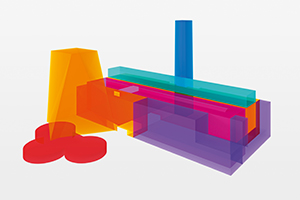

London’s Just-Opened Cultural Masterpiece
Photo Courtesy of Hayes Davidson and Herzog & de Meuron
It’s been years in the planning, but the new Tate Modern is finally open to the public. Architecture firm Herzog & de Meuron, the team responsible for converting the former Bankside Power Station into Tate Modern in the first place, has created a striking new building alongside the riverside icon meant to hold much more of the museum’s astonishing collection of 20th- and 21st- century art. Tanya Barson, Tate Modern’s curator of international art, tells us what to expect from the expansion.
What are you most excited about in terms of the rehang that accompanies the opening of the new building?
It’s an amazing opportunity for us to really showcase how the institution has expanded its collecting over the last 15 years since the original Tate Modern opened. What people will see in the new building is a real expansion to give a much more global perspective on modern and contemporary art. There’s work from all kinds of geographical areas, but also we’ve expanded in terms of media to embrace things such as photography, performance work, live art and installation much more than we would have done previously.

Things Are Looking Up for the City’s Museum Scene, Photo Courtesy of Hayes Davidson and Herzog & de Meuron
As well as displaying recent acquisitions, the new building also enables you to reveal much more of the collection as a whole, right?
There are so many figures whose work has been in the collection for decades, who we are now looking at with renewed interest from the perspective of this present moment in time. An artist like Mary Martin fits that bill, someone who is very interesting in terms of the legacy of abstract geometric art in the postwar period. Her work will be there on display. There are those moments of bringing artists who’ve been in the collection for some considerable time back into focus.
Tell us about the impact of the new building on your own specialism of Latin American art.
We have been able to bring in the work of a number of really important artists from Latin America and a range of work from different eras from Latin America to join the Tate collection. We then show it as part of a single collection that dialogues on its own terms, so we’ve been able to really transform the representation of Latin American art in the collection.
Could you give us an example?
We have a group of works, one of which will feature in the opening displays in the new building, by the Venezuelan artist Gego, who was working in Venezuela from the 1950s until the 1990s. She’s someone who fits into the history of abstract geometric art from the continent, the transformation of a history of concrete art in Latin America, but moves it towards a more audience-responsive kind of art. So, she plays with geometry and makes it more organic and puts it in relation to the spectator, and that’s something that’s very important within Latin American art practice. She’s a really important figure for the history of 20th-century art.
What will the new building mean for the visitor experience?
When the museum was originally built it was designed for 1.5 to 2 million people and we’ve consistently had more than double that in our visitor figures per year.

A Colorful New Experience Awaits Guests, Photo Courtesy of Peter Saville, Hayes Davidson and Herzog & de Meuron
So, the idea is that we’re adding space to every category within the museum, making the museum 60 percent larger. We’re not expecting a growth in our visitors of 60 percent so our visitors will have much more room to see much more art on display. But they’ll also have many more other facilities as well, so it just is an incredibly necessary improvement in the visitor experience.
Everything has been done by thinking about how can we improve the visitors’ experience of Tate Modern and their appreciation of the art that we have on display. And that’s been the incentive, to show more of the collection because the collection is a fantastic resource.
Tell us about the Start Display, one of the innovations of the expansion.
The Start Display is geared towards the broadest audience. It’s a really good starting point if you haven’t visited a museum like this before and offers various ways in to the collection of work from very different eras. It’ll be an incredibly beautiful gallery, whether you’re eight or 80.
What’s your personal take on the new building?
It is a really beautiful building to experience. There’s been attention to areas of flow, a lot more seating and, through the perforated brickwork, there’s a great deal of natural light. From the outside it has this extraordinarily beautiful faceted form. It shifts the way in which one can experience the museum as a whole; it gives it a different character. When the Oil Tanks were opened for the year in 2012, it gave us a taste of how the new building would feel and that it would somehow shift the character of the museum into a whole new phase. It does feel different but it keeps with the history of what Tate and Tate Modern specifically has aimed towards doing.
